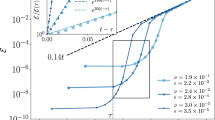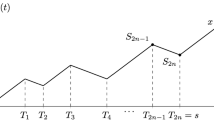Abstract
The detailed analysis of the dynamical process of coin tossing is made. Through calculations, it is illustrated how and why the result is extremely sensitive to the initial conditions. It is also shown that, as the initial height of the mass center of the coin increases, the final configuration, i.e. “head” or “tail”, becomes more and more sensitive to the initial parameters (the initial velocity angular velocity, and the initial orientation), the coefficient of the air drag, and the energy absorption factor of the surface on which the coin bounces. If we keep the “head” upward initially but allow a small range for the change of some other initial parameters, the frequency that the final configuration is “head”, would be 1 if the initial height h of the mass center is sufficiently small, and would be clo to 1/2 if h is sufficiently large. An interesting question is how this frequency changes continuously from 1 to 1/2 as h increases. Detailed calculations show that such a “transition” is very similar to the transition from laminar to turbulent flows. A basic difference between the “transition stage” and the “completely random stage” is indicated: In the “completely random stage”, the deterministic process of the individual case is extremely sensitive to the initial conditions and the dynamical parameters, out the statistical properties of the ensemble are insensitive to the small changes of the initial conditions and the dynamical parameters. On the contrary, in the “transition stage”, both the deterministic process of the individual case and the statistical properties of the ensemble are sensitive to the initial conditions and the dynamical parameters. The mechanism for this feature of the “transition stage” is the existence of the “long-train structure” in the parameter space. The illuminations of this analysis on some other random phenomena are discussed.
Similar content being viewed by others
References
Lin, C.C. and L.A. Segel,Mathematics Applied to Deterministic Problems in the Natural Sciences, Macmillan Publishing Co., Inc., (1974).
Lorenz, E.N.,Journal of the Atmospheric Sciences,20 (1963), 130–141.
Swinney, H.L. and J.P. Gollub,Hydrodynamic Instabilities and the Transition to Turbulence, Springer-Verlag (1981).
Author information
Authors and Affiliations
Rights and permissions
About this article
Cite this article
Zeng-yuan, Y., Bin, Z. On the sensitive dynamical system and the transition from the apparently deterministic process to the completely random process. Appl Math Mech 6, 193–211 (1985). https://doi.org/10.1007/BF01895515
Received:
Issue Date:
DOI: https://doi.org/10.1007/BF01895515




